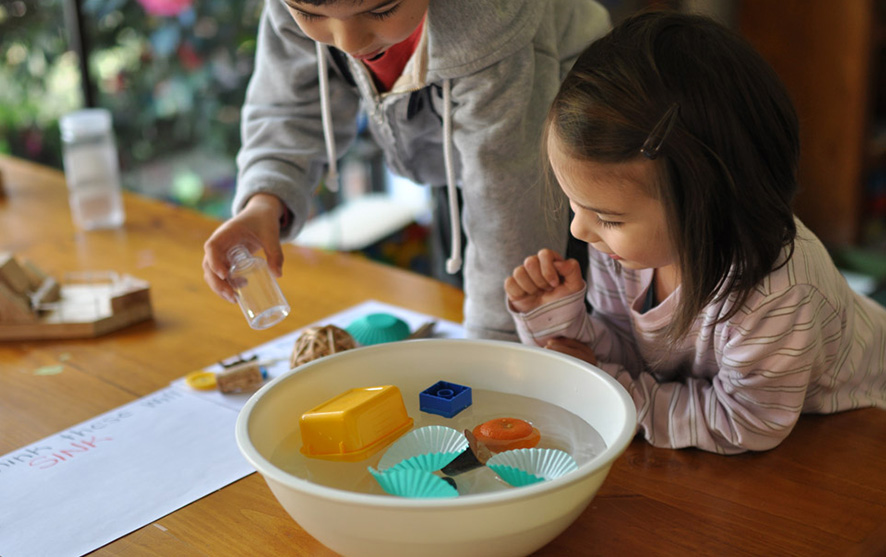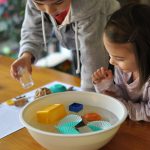Lemon volcano experiment
What you need A lemon (cut in half) Food colouring Washing up liquid Bicarbonate soda/baking [...]
Read more

A range of household objects/small toys, and a large container to fill with water (you could also use the bathtub).
Your child will develop their scientific understanding as they explore objects that float and sink.
Have the water and objects set up ready for some exploration! There will be lots of splashing, so this activity could be enjoyed outdoors, or on a floor surface where you can easily mop up spilled water. Ensure you have plenty of towels on hand!
Encourage your child to experiment with the objects, one at a time. Do they float or sink when placed in the water? Make comments and ask questions about what your child thinks and what their predictions are as you explore each new object. Our recommendation is to ask one question for every four comments. For example, you can comment on things such as ‘This is much bigger than the last object, I wonder if it will float too, or will it sink because it is big?’ Ponder out loud and draw your child into the conversation with you.
Change up the conditions of the experiment – does it make a difference if you drop the object from a greater height? Challenge your child to find other objects that will float/sink.
This can be extended further by recording your findings. Provide paper and pencils and help your child to draw up a chart. The title could be ‘Does it float?’ Your child can draw the objects they are experimenting with and place a tick or cross beside it to indicate whether or not that item floated in the water.